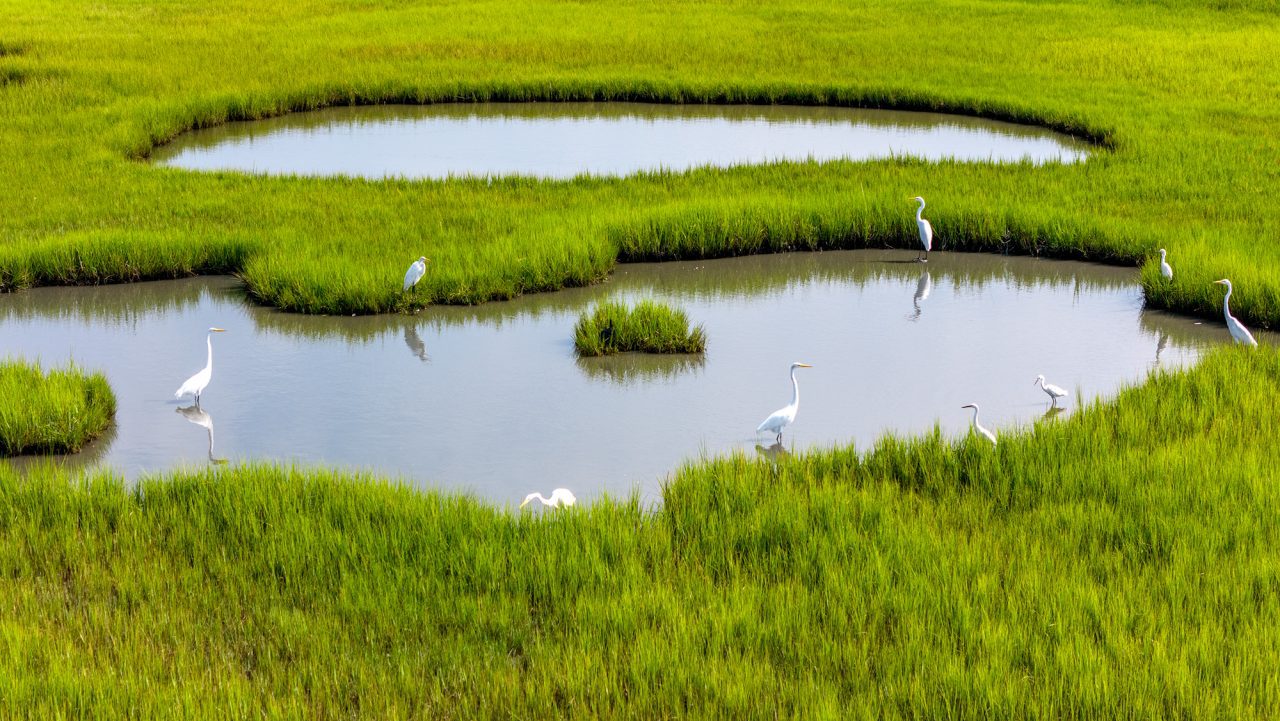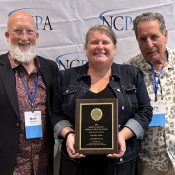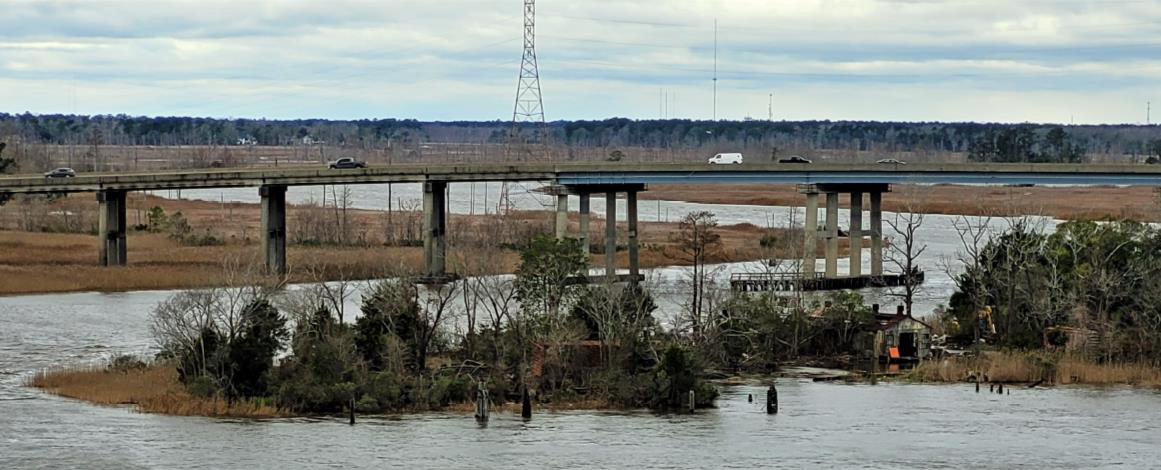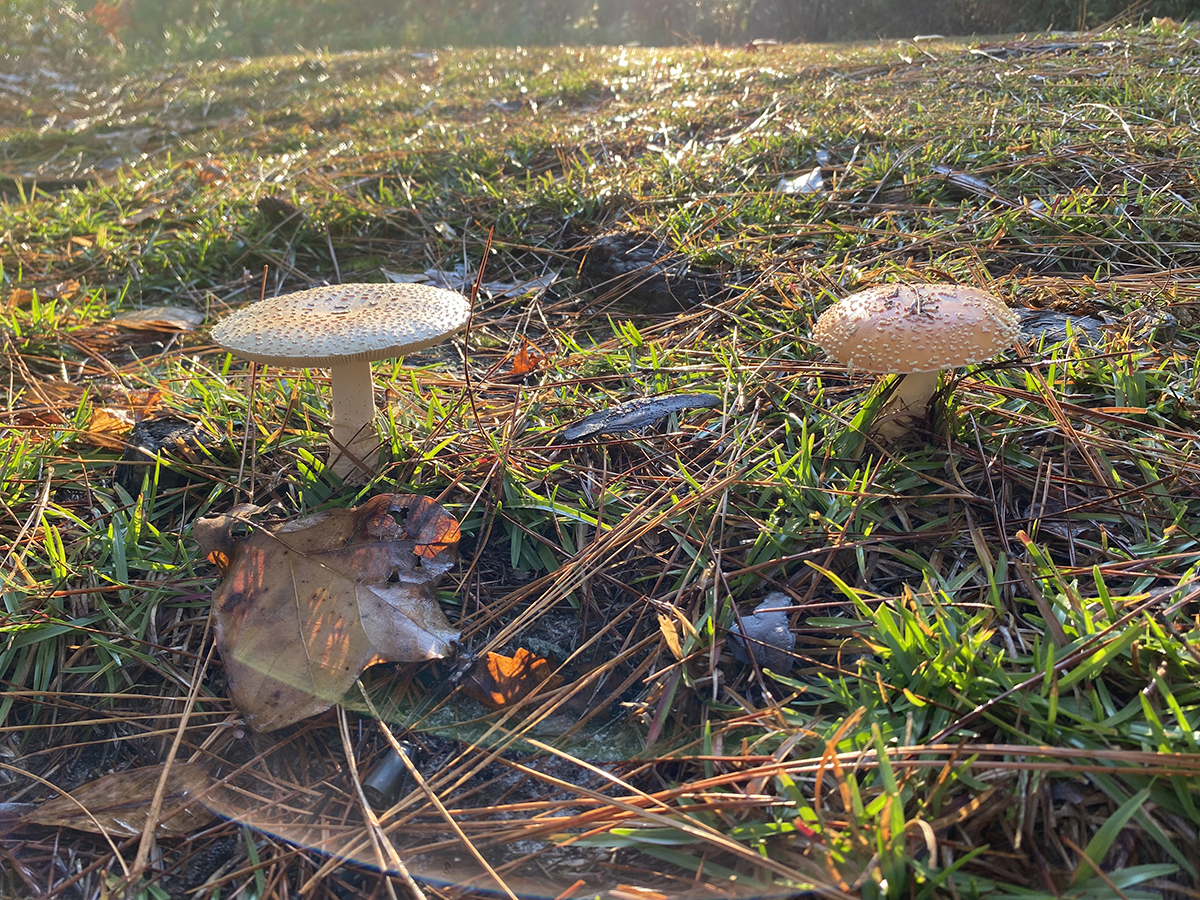
Guest Commentary
To stimulate discussion and debate, Coastal Review welcomes differing viewpoints on topical coastal issues.
Note: National Estuaries Week is Sept. 20-27
Supporter Spotlight
When most people think about fighting climate change, they think about cutting tailpipe emissions, swapping coal plants for solar panels, or driving electric cars. But there’s another powerful tool right in front of us: coastal habitats like salt marshes and submerged seagrass meadows. These living ecosystems are not just fish nurseries, wildlife havens and storm buffers — they are also massive storehouses for carbon, helping slow the pace of global warming.
Nature’s Carbon Vaults
Every blade of marsh grass and every seagrass frond pulls carbon dioxide out of the air and water through photosynthesis. Some of that carbon goes back into the atmosphere when plants die and decay — but much of it gets buried in the wet, oxygen-poor soils beneath. Think of these habitats as nature’s deep freezers: once carbon is locked in the muck, it can stay there for hundreds or even thousands of years.

This storage is so effective that acre-for-acre, coastal wetland ecosystems can hold several times more carbon than forests on land. That’s why scientists call this “blue carbon.”
Beyond Storage: The New Science of Carbon Flux
For years, we assumed the carbon benefits of these habitats came mostly from how much carbon they locked underground. But new research — including work my colleagues and I have been doing — shows that the story is bigger.
Wetlands and seagrass beds aren’t closed systems. They interact constantly with surrounding waters, exchanging organic matter and nutrients in what scientists call lateral flux. In plain English: tides, currents, and groundwater move carbon in and out of these habitats.
Supporter Spotlight
Here’s the exciting part: the more we study this flux, the more we see that coastal habitats are exporting “good carbon”— forms that stimulate carbon storage in seawater or reduce greenhouse gases in the water column. In other words, their climate benefit isn’t just what they store in their soils, but also how they influence the chemistry of surrounding waters.
Early estimates suggest this added benefit may be as large, or even larger, than the carbon stored directly in the soil. That means we’ve been dramatically underestimating how valuable these habitats are for slowing climate change.
Research Coming to North Carolina
This fall, I’ll be bringing this research to North Carolina, where salt marshes play a defining role in both the coastal landscape and economy. With support from the North Carolina Coastal Federation, my team and I will be monitoring marshes in the state to measure their carbon values. These field studies will help determine just how much carbon is being stored and exported — and how that compares with other places along the East Coast and nationwide.
By putting real numbers on the carbon services provided by North Carolina’s salt marshes, we can give policymakers, landowners, and communities the science they need to make smart investments in protecting and restoring them.
More Than Just Carbon
Of course, carbon storage is only one of many economic and ecological gifts coastal wetlands and seagrasses provide. They buffer shorelines from storms, filter pollutants, support fisheries, and provide nurseries for countless species. Protecting and restoring them is not just smart climate policy — it’s smart coastal policy, period.
A Call to Action
We’re still learning just how much carbon benefit these habitats provide, but one thing is clear: Every acre we lose is a lost opportunity to fight climate change and protect coastal communities. Protecting and restoring degraded marshes and seagrass meadows is one of the rare win-win strategies that helps people, wildlife, and the planet’s climate at the same time.
As new science on lateral flux continues to emerge — and as fresh fieldwork in North Carolina fills in key data gaps — we’ll have an even stronger case for investing in these natural climate powerhouses. Protecting coastal habitats isn’t just about saving pretty places — it’s about giving our coastal communities and working lands a fighting chance against rising seas and extreme storms.
Opinions expressed by the authors are not necessarily those of Coastal Review or our publisher, the North Carolina Coastal Federation.







